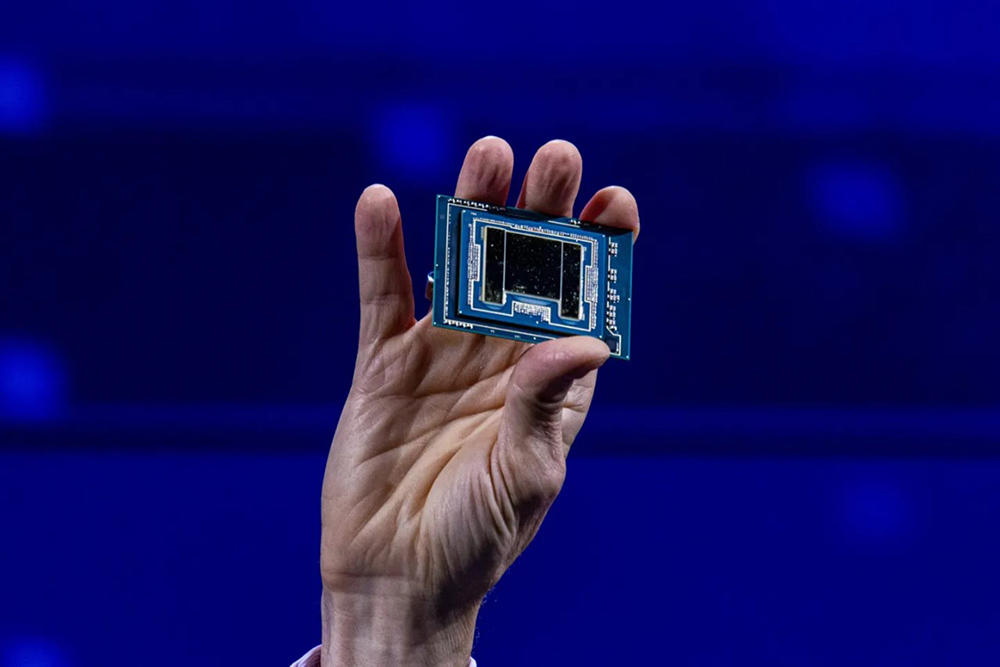
在英特尔(Intel)突然罢免前任首席执行官三个月后,这家陷入困境的美国芯片业巨头迎来了新掌门人——陈立武。
这则消息提振了投资者的信心,周四,英特尔股价逆势大涨近15%。从任何角度来看,陈立武都是令人瞩目且资历过硬的理想人选。作为半导体行业的资深领袖,陈立武曾在芯片设计软件巨头楷登电子(Cadence Design Systems)担任首席执行官十余年,他兼具领导英特尔这种规模庞大、结构复杂且独具特色的企业所需的宝贵技能与经验。
但对于认为英特尔需要彻底变革才能生存的观察者而言,这项任命却耐人寻味。
英特尔近年来最突出的问题之一就是优柔寡断,试图左右逢源却总是浅尝辄止。英特尔究竟是芯片设计公司还是芯片制造公司?其根基在于x86架构,还是作为一家芯片制造公司能灵活运用其他设计开拓市场(想想命运多舛的StrongARM和Itanium芯片)?它属于PC/服务器芯片公司还是AI芯片公司?
陈立武恰恰体现了英特尔与生俱来的矛盾性与摇摆倾向。某种程度上,他是英特尔史上首位“空降”首席执行官。2022至2024年期间,他曾担任英特尔董事,而这段时期公司深陷困境,因此严格来说他也属于现有管理层(陈立武于2024年8月以“需要重新安排事务优先级”为由辞去董事职务)。
凭借在楷登电子的经历,陈立武既懂芯片设计,也了解芯片制造,曾与芯片代工厂密切合作。具备这种复合背景的人才本就凤毛麟角——但这也意味着英特尔并未明确战略方向。若英特尔选择有财务背景的掌舵者,剥离芯片制造业务(如部分前董事主张的将公司一分为二的方案)几乎板上钉钉。若英特尔以其前首席执行官克雷格·巴雷特为模板,寻找年长的元老做掌门人,则传递出英特尔“完整不可分割”的明确信号。
陈立武在本周二致员工信中写道:“在优势领域,我们要乘胜追击扩大优势;在落后领域,需精准冒险实现弯道超车;在进展迟缓的领域,必须另辟蹊径加快速度。”
这看似是承诺加强已落后的英特尔芯片制造业务,但陈立武的措辞留有充分回旋余地。他作为风投家对AI初创企业的布局,也为英特尔发力AI芯片、挑战行业领袖英伟达(Nvidia)带来想象空间,但这并不等同于战略重塑的保证。
陈立武是恰到好入的首席执行官人选,他具备了让各方满意的完美条件。但这是否真的是英特尔当下所需要的,将成为2025年最值得关注的商业故事。(财富中文网)
译者:刘进龙
审校:汪皓
在英特尔(Intel)突然罢免前任首席执行官三个月后,这家陷入困境的美国芯片业巨头迎来了新掌门人——陈立武。
这则消息提振了投资者的信心,周四,英特尔股价逆势大涨近15%。从任何角度来看,陈立武都是令人瞩目且资历过硬的理想人选。作为半导体行业的资深领袖,陈立武曾在芯片设计软件巨头楷登电子(Cadence Design Systems)担任首席执行官十余年,他兼具领导英特尔这种规模庞大、结构复杂且独具特色的企业所需的宝贵技能与经验。
但对于认为英特尔需要彻底变革才能生存的观察者而言,这项任命却耐人寻味。
英特尔近年来最突出的问题之一就是优柔寡断,试图左右逢源却总是浅尝辄止。英特尔究竟是芯片设计公司还是芯片制造公司?其根基在于x86架构,还是作为一家芯片制造公司能灵活运用其他设计开拓市场(想想命运多舛的StrongARM和Itanium芯片)?它属于PC/服务器芯片公司还是AI芯片公司?
陈立武恰恰体现了英特尔与生俱来的矛盾性与摇摆倾向。某种程度上,他是英特尔史上首位“空降”首席执行官。2022至2024年期间,他曾担任英特尔董事,而这段时期公司深陷困境,因此严格来说他也属于现有管理层(陈立武于2024年8月以“需要重新安排事务优先级”为由辞去董事职务)。
凭借在楷登电子的经历,陈立武既懂芯片设计,也了解芯片制造,曾与芯片代工厂密切合作。具备这种复合背景的人才本就凤毛麟角——但这也意味着英特尔并未明确战略方向。若英特尔选择有财务背景的掌舵者,剥离芯片制造业务(如部分前董事主张的将公司一分为二的方案)几乎板上钉钉。若英特尔以其前首席执行官克雷格·巴雷特为模板,寻找年长的元老做掌门人,则传递出英特尔“完整不可分割”的明确信号。
陈立武在本周二致员工信中写道:“在优势领域,我们要乘胜追击扩大优势;在落后领域,需精准冒险实现弯道超车;在进展迟缓的领域,必须另辟蹊径加快速度。”
这看似是承诺加强已落后的英特尔芯片制造业务,但陈立武的措辞留有充分回旋余地。他作为风投家对AI初创企业的布局,也为英特尔发力AI芯片、挑战行业领袖英伟达(Nvidia)带来想象空间,但这并不等同于战略重塑的保证。
陈立武是恰到好入的首席执行官人选,他具备了让各方满意的完美条件。但这是否真的是英特尔当下所需要的,将成为2025年最值得关注的商业故事。(财富中文网)
译者:刘进龙
审校:汪皓
Three months after Intel summarily ousted its previous CEO, America’s ailing chip giant has a new boss: Lip-Bu Tan.
The news cheered investors, who bid Intel’s shares up more than 10% in after hours trading on Wednesday. By all measures, Tan is an impressive and eminently qualified choice for the job. A semiconductor industry veteran who served as CEO of chip design software powerhouse Cadence Design Systems for more than a decade, Tan possesses the rare combination of skills and experience to lead an organization as large, complex, and unique as Intel.
For anyone of the opinion that Intel needs a radical shake-up in order to survive however, Tan is a curious choice.
One of Intel’s biggest problems throughout its recent history has been its inability to make tough decisions; vacillating instead between tepid attempts to have it both ways. Is Intel a chip design company or a chip manufacturing company? Is its identity tied to the x86 architecture or is it a chipmaker with the dexterity to conquer markets using other designs (consider the ill-fated StrongARM or Itanium chips)? Is it a PC and server chip company or an AI chip company?
Tan embodies Intel’s innate ambivalence and predilection for wavering. He’s the first outsider ever to get the CEO gig at Intel … sort of. He served on Intel’s board from 2022 to 2024, a period when Intel has struggled, so he’s arguably part of the existing regime (Tan resigned from the board in August 2024 citing “a personal decision based on a need to reprioritize various commitments”).
With his background at Cadence, Tan understands the design side of the chip business as well as the manufacturing side, having worked closely with chip fabrication facilities. It’s not easy finding someone with that skill set—and it doesn’t clearly commit Intel to any one particular path. Had Intel appointed a financial type for the top job, the divestiture of Intel’s chip manufacturing facilities — essentially splitting the company in two as some former Intel directors have called for —would have been all but written on the wall. If Intel had picked a grizzled company lifer, in the mold of former CEO Craig Barrett, the message of a unified, unbreakable Intel, would have resonated loud and clear.
“In areas where we have momentum, we need to double down and extend our advantage,” Tan wrote in a letter to Intel staffers on Tuesday. “In areas where we are behind the competition, we need to take calculated risks to disrupt and leapfrog. And in areas where our progress has been slower than expected, we need to find new ways to pick up the pace.”
That sounds like a commitment to Intel’s chip fabrication operations, where the company has fallen behind the competition, while being just vague enough to leave Tan plenty of leeway. Tan’s work as a venture capitalist investing in AI startups also raises exciting possibilities for Intel to get serious about AI chips and challenging industry leader Nvidia, but it’s hardly a guarantee of a strategic rethink.
Tan is the Goldilocks CEO pick. He’s got everything it takes to make everyone happy. Whether that’s what Intel actually needs right now will be the big story to watch in 2025.






